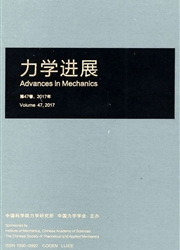

 中文摘要:
中文摘要:
胶接结构的强度分析方法可以分为解析法和数值法两类,数值法主要是有限元方法.本文综述了复合材料胶接结构的有限元分析方法,按照胶接结构有限元模型建立的物理机理,将胶接结构力学分析模型分为基于有限元应力分析模型、基于断裂力学模型和基于损伤力学模型3类.详细介绍了这3类模型中的主要有限元建模分析方法:三维应力分析方法、虚拟裂纹闭合技术方法和内聚力模型方法,介绍了每种方法的基本思想、适用范围、优缺点、改进和扩展、有限元建模的实施步骤,以及有限元分析中应用该方法所取得的成果.第五部分从适用范围、应力奇异和破坏判据3个方面对这几种分析模型进行了对比分析.最后,对该领域发展趋势进行了展望.
 英文摘要:
英文摘要:
The strength analysis methods of adhesive bonded structure can be classified into two types, i.e., analytical method and numerical method, and the numerical method is mainly finite element method. In this paper, the finite element analysis methods for composite adhesive bonding structures are summarized, and based on the physical mechanism of the methods, the main FEM analysis methods of adhesively bonded composite joints are classified into three types, i.e., stress-based model, fracture mechanics-based model and damage mechanics-based model. 3D stress-based model, VCCT model and CZM model have been summarized in details, including their basic concepts, range of applications, advantages and disadvantages, improvements and extension as well as the implementation procedures. The recent progresses and necessary comments have also been reviewed in the present paper. These methods have been compared and analyzed from three aspects in the fifth part, such as the scope, singular stress and failure criterion, and further development trends in this area are also prospected.
 同期刊论文项目
同期刊论文项目
 同项目期刊论文
同项目期刊论文
 期刊信息
期刊信息
